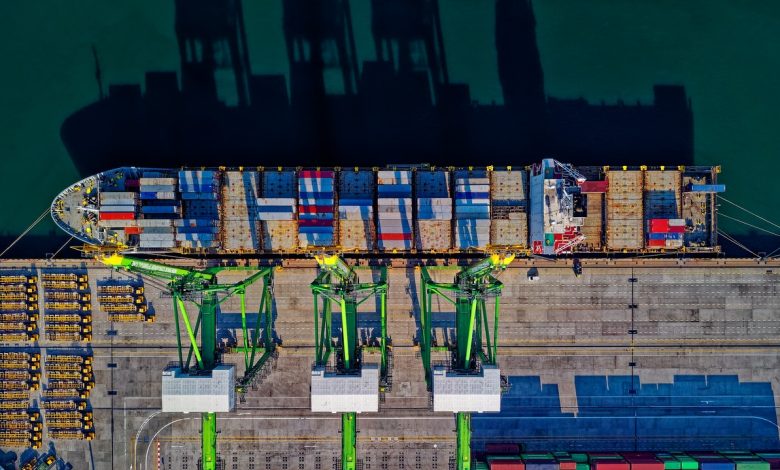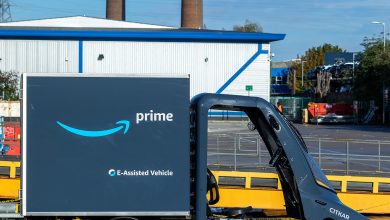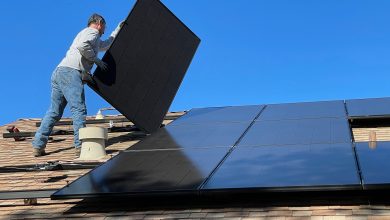
It goes without saying that the green revolution is truly here, and with both large and small businesses alike jumping on the bandwagon, there’s never been a better time to make the switch.
Traditionally, the environmental performance of ships and vessels within the maritime industry has never been much of a concern. However, with the imminent and arguably unavoidable greening of the transportation sector, it’s only a matter of time before the spotlight is shone full beam on its close cousin, the maritime sector.
From switching over from fossil fuels in favour of more sustainable energy to complying with current and future environmental regulations, ensuring the maritime sector is engaging in environmentally friendly practices is about more than carbon emissions. The term green retrofit is a particularly popular buzzword in the industry right now– so what is green retrofit? And what does it mean for the maritime industry?
What is a retrofit in the maritime industry?
A retrofit is the alteration of an existing vessel. A highly complicated process that requires stringent project management, a retrofit usually entails updating older style equipment for the purpose of modernising the vessel. This is in contrast to a simple refit, where older equipment is simply replaced meaning the structure of the vessel remains largely unchanged.
What is green retrofit?
As the name suggests, green retrofit is the refurbishment of an existing vessel or ship for the purpose of making it more sustainable, efficient and better for the environment as well as the future of our planet. The changes can result in a major refurbishment or a minor – either way, a green retrofit is essentially an attempt to reduce the carbon footprint of a vessel and futureproof it.
There are no set criteria as to what is and isn’t green retrofitting. This is because the refurbishment and changes made will come down to the unique specifications of the vessel, the challenges presented and what needs to be delivered with the project. However, when green retrofitting a vessel, there are considerations that should be taken into account:
- What is the primary function of the vessel and how will it be used in the future?
- What cost-effective technologies are available that can help to achieve the goals of the retrofit while still keeping with local regulations?
- Do the proposed strategies work together to achieve the desired result?
Benefits of green retrofitting
Traditionally, when it comes to the maritime industry, new builds have been cheaper and presented fewer challenges than a retrofit project. It is these challenges that in the past, have deterred the parties within the maritime industry from retrofitting existing ships and vessels. However, it’s important to remember that a green retrofit can consist of smaller, more manageable projects and does not necessarily require a full refurbishment.
Regardless of size or function, most vessels will undergo a mid-life retrofit at some point. Every owner or operator has their own unique requests, which is usually completed in a dry dock or port harbour. These days, there are a variety of other strategies that can be implemented onboard a vessel that can futureproof its operations while still easing its impact on the environment.
Longer vessel lifespan
The idea of a ship retrofit has attracted ship management companies and owners across the sector in recent years for not only being more environmentally friendly but also for the process’s innate ability to extend the lifespan of a ship.
Cost-effective
Although it may be tempting to do away with an older style vessel, green retrofitting may be more economical in the long term. Retrofitting has become increasingly popular with owners and operators in recent years, the process of which can ensure a vessel is benefitting from reduced fuel consumption as well as complying with current and future government legislation and regulations. The process of green retrofitting also ensures vessels are equipped with more modern, more efficient technology that can streamlines operations and bring down overhead costs.
Why is green retrofitting important?
The release of greenhouse gases, particularly carbon, is undoubtedly one of the most pressing environmental impacts of the maritime sector’s operations, including shipping which is considered a crucial cog in the global economy. It is obvious that a carbon-neutral fuel must be implemented within the maritime industry for both environmental and compliance reasons. However, the industry may have to wait years before it can fully rely only on sustainable energy sources.
To minimise the impact on the environment and keep emissions as low as possible, it is important for the maritime industry to explore improvements in existing assets and assure optimal energy efficiency. The long-term nature of the vessels, which have come to represent pretty hefty investments as well as largescale operating costs, further emphasises the need for a more efficient and environmentally friendly industry. By choosing to green retrofit an existing vessel instead of employing the tools and manpower necessary for a new build, owners and operators alike can increase the lifespan of their fleet as well as bring down costly fuel consumption. This process, which essentially further streamlines a vessel, is a more efficient and futureproof solution to costly new builds.
Final thoughts
There’s no denying that the green revolution has arrived, and with large and small businesses alike getting on board, there’s never been a better moment to make the switch. Historically, the environmental performance of ships and boats has never been a major concern in the maritime business. With the impending and arguably inescapable greening of the transportation industry, it’ll only be a matter of time until the maritime sector comes under the spotlight.
The term green retrofit may seem like a trendy buzzword in the market right now, but what exactly does it mean? What does this imply for the maritime sector? For the maritime industry, it means a more cost-effective, environmentally friendly alternative to new builds that essentially futureproofs the day-to-day operations of a vessel or ship.



